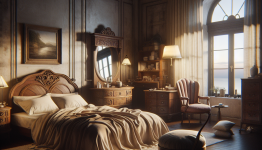Introduction to Bed Bugs

Bed bugs are small, parasitic insects that belong to the Cimicidae family. Known for their ability to infest homes and other human environments, these pests have become a significant concern for many households. The resurgence of bed bugs in recent years has made it crucial for people to understand what these insects look like and how to manage them effectively. Images of bed bugs often reveal their reddish-brown, oval-shaped bodies, which can swell and become more elongated after feeding on blood.
Understanding these images can help in quickly identifying these pests, which is essential in preventing and controlling infestations. Bed bugs are notorious for their elusive nature, often hiding in cracks and crevices during the day and coming out at night to feed. Their ability to multiply rapidly and withstand various conditions makes them a formidable pest. This introduction aims to familiarize you with the appearance and behavior of bed bugs, laying the foundation for recognizing and addressing an infestation.
Identifying Bed Bugs
Identifying bed bugs can be challenging due to their small size and nocturnal habits. However, knowing what to look for is the first step in managing a potential problem. When trying to determine what do bed bugs look like, it is crucial to note their distinct features. Adult bed bugs are about the size of an apple seed, with flat, oval bodies that become more balloon-like after feeding. Their color ranges from reddish-brown to a darker hue when engorged with blood.
Images of bed bugs often highlight their six legs and two antennae, which are crucial for navigating their environment. Nymphs, or immature bed bugs, are smaller and lighter in color, making them harder to spot. Bed bug identification tips include looking for these nymphs as well as adult bed bugs, especially in areas where people sleep. Photographs of infestations can be particularly helpful in distinguishing these pests from other insects, such as fleas or carpet beetles.
How to Identify Bed Bugs
Successfully identifying bed bugs requires a keen eye and knowledge of their preferred hiding spots. Bed bugs are often found in mattress seams, box springs, bed frames, and headboards. They can also inhabit furniture, luggage, and even behind wallpaper. When inspecting these areas, look for live bugs, shed skins, or eggs, which are typically white and about the size of a pinhead.
Visual aids, such as images of bed bugs and their habitats, can be invaluable in confirming their presence. When examining potential signs of infestation, a magnifying glass can be helpful in spotting these minute creatures. Additionally, understanding the subtle differences between bed bugs and other insects can prevent misidentification, allowing for a more targeted approach to treatment.
Signs of a Bed Bug Infestation
Detecting a bed bug infestation early is crucial in preventing its spread and minimizing the discomfort it causes. One of the primary signs of bed bug infestation is the presence of bites on the skin. These bites often appear in clusters or lines and can cause itching, redness, and swelling. However, not everyone reacts to bed bug bites, so it’s important to look for additional signs.
Bed bugs typically leave behind other indicators of their presence. These include dark spots on bedding, which are actually bed bug excrement, and rusty or reddish stains on sheets, resulting from crushed bugs. Images of bed bugs in these scenarios can help in visualizing what to look for.
Recognizing Infestation Symptoms
Another sign of a bed bug infestation is the presence of a musty, sweet odor, which is emitted by the bugs’ scent glands. This smell can become more pronounced as the infestation grows. Additionally, finding shed skins or tiny eggs in mattress seams, furniture joints, or other crevices can signal an active infestation.
Regular inspection of sleeping areas and other common places to find bed bugs is essential, particularly after travel or hosting guests. Utilizing bed bug identification tips can aid in a thorough examination, ensuring that any signs of an infestation are caught early.
Life Cycle of Bed Bugs
Understanding the life cycle of bed bugs is key to effective control and eradication. Bed bugs undergo a simple metamorphosis with three main stages: egg, nymph, and adult. A female bed bug can lay hundreds of eggs in her lifetime, often depositing them in hidden cracks and crevices. These eggs hatch in about a week, releasing nymphs that immediately begin searching for a blood meal.
Images of bed bugs at various life stages can be useful for identification purposes, as nymphs are smaller and lighter in color compared to adults. Nymphs undergo five molts before reaching maturity, and they require a blood meal before each molt. Under optimal conditions, bed bugs can reach adulthood in about a month and live for several months, making their life cycle a contributing factor to rapid population growth.
Common Bed Bug Habitats
Bed bugs are highly adaptable and can thrive in various environments. Understanding where do bed bugs live is crucial for effective management and prevention. These pests prefer to reside near their food source, which is why they are commonly found in beds, mattresses, and upholstered furniture. However, bed bugs can also inhabit less obvious locations, such as electrical outlets, picture frames, and even behind baseboards.
Identifying Bed Bug Hotspots
Common places to find bed bugs extend beyond the bedroom. They can be present in hotels, public transportation, and even movie theaters. Images of bed bugs in these diverse settings highlight their adaptability and resilience. Regular inspections of these areas, especially after travel, can prevent bringing these unwanted guests into your home.
Knowing how to identify bed bugs in various habitats is essential for targeted treatment and prevention. By recognizing their preferred environments, you can take proactive measures to reduce the risk of an infestation. Utilizing bed bug identification tips and staying vigilant in inspecting potential hotspots will contribute to maintaining a bed bug-free space.
Common Mistakes in Identifying Bed Bugs from Images
Identifying bed bugs from images can be tricky, leading to common bed bug identification mistakes. Many individuals often confuse bed bugs with other insects such as carpet beetles or fleas, primarily due to their similar size and shape. This misidentification can cause unnecessary panic or inadequate treatment measures. One prevalent mistake is relying on blurry or low-resolution images that obscure distinguishing features of bed bugs. For example, the distinct oval shape, reddish-brown color, and six legs of bed bugs might not be apparent in poor-quality images, leading to misidentification.
Another common error involves the misinterpretation of the environment in which the bed bug is found. Bed bugs are typically found in hidden crevices and furniture seams, not flying around like other insects. Therefore, images showing bugs in unusual settings might lead to incorrect assumptions about their identity. Additionally, the presence of bed bug eggs, shed skins, or fecal spots in images can help confirm an infestation, but these are often overlooked when examining pictures. Recognizing these common bed bug identification mistakes is crucial for accurate identification and effective pest control.
The Importance of High-Quality Images in Bed Bug Identification
High-quality bed bug photos are essential for accurate identification and subsequent eradication efforts. Images with adequate resolution allow for a clear view of the insect’s specific features, such as its size, shape, and color. A high-quality image can reveal the fine details like the bed bug’s segmented body and antennae, which are critical for distinguishing it from other pests. This precision is crucial for pest control professionals and homeowners alike, as misidentification can lead to ineffective treatments and prolonged infestations.
Moreover, high-quality images can be used for educational purposes, helping individuals and professionals alike to better understand the appearance and behavior of bed bugs. These images can be shared among pest control communities, enhancing collective knowledge and improving identification techniques. In the digital age, where images can be easily shared and analyzed, the importance of having clear and precise photographs cannot be overstated. They not only aid in immediate identification but also serve as a valuable resource for ongoing research and education in bed bug management.
How to Capture Clear Images of Bed Bugs for Accurate Identification
Capturing clear images of bed bugs is a vital step in ensuring accurate identification and effective pest control solutions. There are several techniques and tools that can aid in obtaining high-quality photographs. Firstly, using a camera with a macro lens can help capture the fine details of a bed bug’s anatomy. This type of lens allows for close-up shots that highlight key features necessary for identification. Additionally, ensuring proper lighting is crucial, as shadows can obscure details and lead to misidentification.
When capturing bed bug images, it’s important to focus on various angles to provide a comprehensive view of the insect. Photographs should include shots of the bed bug’s top, side, and underside whenever possible. This variety in perspective can help differentiate the insect from similar-looking pests. Furthermore, placing a ruler or coin next to the bed bug in the image can provide a useful scale reference, giving context to the bug’s size.
Finally, stability is key to capturing clear images of bed bugs. Using a tripod or a steady surface to stabilize the camera can prevent blurriness. If a smartphone camera is being used, employing a magnifying attachment can enhance the quality of the close-up shots. By following these techniques, individuals can capture the clear images of bed bugs necessary for accurate identification and subsequent control measures.
The Role of Technology in Enhancing Bed Bug Image Analysis
Technology plays an increasingly significant role in enhancing bed bug image analysis, making it easier and more efficient for both professionals and amateurs to identify these pests. Advanced software and applications can now analyze images of bed bugs, identifying key features and comparing them to extensive databases of known pests. This technology reduces human error and speeds up the identification process, facilitating quicker responses to infestations.
Machine learning algorithms are also being integrated into bed bug image analysis, improving the accuracy and reliability of identifications. These algorithms can be trained to recognize subtle differences between bed bugs and other insects, minimizing the risk of common bed bug identification mistakes. Furthermore, cloud-based platforms allow users to upload images for expert analysis, providing access to pest control specialists who can offer advice and confirmation on the presence of bed bugs.
The integration of technology in bed bug image analysis extends beyond simple identification. It also aids in bed bug control through image analysis by monitoring the effectiveness of treatments over time. By regularly capturing and analyzing images of treated areas, pest control professionals can assess the success of their interventions and make adjustments as necessary. This technological advancement not only enhances identification but also supports ongoing bed bug management efforts.
Expert Tips for Using Images in Bed Bug Control and Prevention
Images play a crucial role in bed bug control and prevention, providing a visual tool that can be leveraged for effective pest management. Expert bed bug prevention tips using images focus on both identification and ongoing monitoring. Firstly, maintaining a visual log of bed bug sightings through photographs can help track the spread and density of an infestation, offering valuable insights for targeted treatment strategies.
Experts also suggest using images as a means of educating tenants or household members. High-quality bed bug photos can be used to inform individuals about what to look for, reducing the likelihood of overlooking early signs of an infestation. This educational approach empowers people to participate actively in bed bug prevention efforts, recognizing the insects before they have a chance to multiply.
In addition to identification and education, images can aid in verifying the success of pest control measures. By taking before-and-after photos of treated areas, individuals and professionals can visually assess the efficacy of their interventions. This practice not only ensures accountability but also provides evidence of successful bed bug management.
Finally, incorporating technology in bed bug image analysis supports prevention by enabling regular monitoring without the need for physical inspections. Automated image analysis systems can alert users to potential infestations, allowing for prompt action before the problem escalates. By following these expert tips and leveraging the power of images, individuals can enhance their bed bug control and prevention strategies.
How to Prevent Bed Bug Infestations Through Image-Based Inspections
In recent years, the rise of bed bug infestations has prompted homeowners and pest control professionals to seek out innovative solutions to prevent these pests. One of the most effective methods being utilized today is image-based bed bug inspection techniques. These techniques involve using high-resolution images to detect the presence of bed bugs in various environments, offering a non-intrusive and efficient way to monitor for potential infestations.
Image-based inspections involve capturing detailed images of spaces such as bedding, furniture, and cracks in walls, where bed bugs are likely to hide. These images are then analyzed either manually by experts or through advanced software that can identify the subtle signs of bed bug presence. By employing such techniques, individuals and pest control experts can catch infestations early, potentially saving thousands in remediation costs and preventing the spread of these pests to other areas.
The effectiveness of image-based inspections relies heavily on the quality of the images and the expertise of those analyzing them. High-resolution cameras and specialized imaging tools are essential, as they can capture details that may not be visible to the naked eye. Additionally, training in recognizing bed bug characteristics in images is crucial for those conducting these inspections. As technology advances, these image-based methods are expected to become even more sophisticated, offering an essential tool in the fight against bed bug infestations.
The Role of Technology in Identifying Bed Bugs Through Images
Technology plays a pivotal role in enhancing our ability to identify bed bugs through images. Digital tools for bed bug detection have become increasingly accessible and affordable, providing both professionals and the general public with powerful resources to combat these pests. By integrating machine learning and artificial intelligence, these tools have elevated the accuracy and efficiency of identifying bed bugs in images.
One of the most significant advancements is the development of mobile applications that allow users to upload images of suspected bed bug sightings. These applications use algorithms to analyze the images and provide feedback on whether bed bugs are present. Such technology for bed bug identification has democratized the process, enabling anyone with a smartphone to participate in early detection efforts.
Moreover, these digital tools are not limited to individual use. Pest control companies are increasingly adopting sophisticated software that can process large volumes of images from multiple sites, providing comprehensive monitoring solutions. These systems can be integrated with other technologies, such as environmental sensors, to offer a more holistic approach to pest management. As the technology continues to evolve, the role of digital tools in identifying bed bugs through images will undoubtedly expand, offering new opportunities for innovation in pest control.
Understanding the Psychological Impact of Bed Bug Images
The psychological effects of bed bug images can be profound, influencing both public perception and individual behavior. Bed bugs are associated with discomfort, anxiety, and social stigma, and images of these pests can trigger strong emotional responses. Understanding these psychological impacts is essential for effective communication and public health strategies.
For many, seeing images of bed bugs can evoke feelings of distress and paranoia, leading to excessive cleaning or avoidance behaviors. This reaction is often exacerbated by the ubiquity of bed bug imagery in the media, which can sensationalize the issue and contribute to a heightened sense of fear. As such, it is important for health campaigns and educational materials to present bed bug images in a way that is informative rather than alarmist, helping to reduce anxiety while providing practical advice.
Additionally, the psychological impact of bed bug images extends to individuals who have experienced infestations. For these individuals, images can serve as a reminder of past trauma, potentially leading to heightened stress or even post-traumatic stress disorder (PTSD) symptoms. Mental health support and counseling may be necessary for those significantly affected by bed bug infestations, underscoring the importance of a compassionate approach when sharing bed bug images in public forums.
The Evolution of Bed Bug Imagery in Public Health Campaigns
Over the years, bed bug imagery in health campaigns has evolved significantly, reflecting changes in public awareness and the development of new technologies. Initially, public health campaigns relied on simple illustrations and diagrams to educate the public about bed bugs and their prevention. These early efforts focused on basic identification and hygiene practices to prevent infestations.
With the advent of digital media, bed bug imagery has become more sophisticated and widespread. High-quality photographs and videos are now common, providing a more realistic view of these pests and their behaviors. Public health campaigns have harnessed these images to create engaging and informative content, using them to demonstrate effective prevention and control measures.
Moreover, the use of digital platforms has allowed for more interactive and personalized approaches to public health messaging. Online resources and social media campaigns can tailor bed bug imagery to specific audiences, addressing unique concerns and cultural contexts. This evolution has made bed bug imagery a powerful tool in raising awareness and promoting proactive measures against infestations.
Legal and Ethical Considerations When Sharing Bed Bug Images
Sharing bed bug images, especially in the context of public health and pest control, involves several legal and ethical considerations. The legal implications of sharing bed bug images primarily concern privacy and consent. For instance, if images are taken in private residences or commercial properties, it is crucial to obtain permission from the property owner before sharing these images publicly. Failure to do so could result in legal action for invasion of privacy or unauthorized use of property images.
Ethical sharing of pest control images also involves ensuring that the images are used responsibly and do not contribute to misinformation or undue panic. It is important to provide context and accurate information alongside images, helping viewers understand the situation without resorting to fearmongering. Additionally, care should be taken to protect the identities and locations of individuals involved, particularly in cases where infestations may carry social stigma.
Furthermore, ethical considerations extend to the portrayal of bed bugs in media and educational materials. Images should be chosen and presented with sensitivity to their potential psychological impact, avoiding sensationalism and respecting the dignity of those affected by infestations. By adhering to these legal and ethical guidelines, stakeholders can ensure that the sharing of bed bug images serves the public good without compromising individual rights or well-being.
Quick Takeaways:
Images of bed bugs serve as a critical tool in understanding and managing infestations. Recognizing what bed bugs look like is the first step in addressing a potential problem. These pests are small, wingless insects with a reddish-brown color, typically about the size of an apple seed. The ability to accurately identify them can prevent unnecessary anxiety and expenditures on ineffective treatments.
The life cycle of bed bugs involves several stages, from egg to nymph to adult, each of which may require specific identification techniques. Bed bugs are often found in common places like mattress seams, box springs, and other crevices close to sleeping areas. Knowing where bed bugs live is crucial for effective inspection and control.
Technology in bed bug image analysis has advanced significantly, allowing for more precise identification and management. Digital tools for bed bug detection can identify infestations early, preventing them from spreading further. High-quality bed bug photos, available through various resources, can help in distinguishing these pests from other insects.
Expert bed bug prevention tips using images include regularly inspecting sleeping areas and employing image-based bed bug inspection techniques. These approaches can aid both homeowners and professionals in maintaining a bed bug-free environment. By understanding the signs of bed bug infestation, such as blood stains on sheets and bites on the skin, homeowners can take swift action.
FAQs:
1.
How can I use images of bed bugs to identify them accurately?
Images of bed bugs are invaluable for accurate identification. By comparing clear images to the insects you suspect to be bed bugs, you can confirm their presence. Look for characteristics such as their oval shape, reddish-brown color, and lack of wings. High-quality bed bug photos can help differentiate them from similar pests, such as carpet beetles or cockroach nymphs.
2.
What are common places to find bed bugs in a home?
Bed bugs often reside in areas close to where people sleep. Common places to find bed bugs include mattress seams, box springs, bed frames, and headboards. They can also hide in cracks and crevices of furniture, behind wallpapers, and inside electrical outlets. Regular inspection of these areas, using bed bug identification tips, can help detect an infestation early.
3.
What are some common bed bug identification mistakes?
A frequent mistake is confusing bed bugs with other insects, such as fleas or ticks. Misidentification can lead to ineffective treatments. Using high-quality images of bed bugs can minimize these errors. Additionally, overlooking the nymph stage, which is smaller and lighter in color, can result in missed infestations. Comprehensive image-based bed bug inspection techniques can help avoid these pitfalls.
4.
How has technology improved bed bug identification?
Technology for bed bug identification has significantly improved through digital tools and apps that analyze images of bed bugs. These tools can quickly identify the presence of bed bugs from photos, providing immediate feedback and reducing the time to take action. This advancement aids both professional pest controllers and homeowners in managing infestations more effectively.
5.
What are the psychological effects of viewing bed bug images?
The psychological effects of bed bug images can vary. For some, these images can induce anxiety, especially if there’s a fear of infestation. However, for others, they offer a sense of control and preparedness by providing the necessary visual information to identify and deal with an infestation. Understanding and educating oneself through these images can mitigate fear and promote proactive measures.
Conclusion:
In conclusion, images of bed bugs play a vital role in the identification and management of infestations. They help demystify what bed bugs look like, aiding both laypersons and professionals in recognizing these pests. By understanding the signs of bed bug infestation and employing digital tools for bed bug detection, individuals can take informed actions to control and prevent these pests.
The advancement of technology in bed bug image analysis has provided new avenues for early detection and accurate identification, minimizing the spread of infestations. As we continue to harness these tools, the use of high-quality and clear images of bed bugs will remain an essential part of effective pest management strategies. By doing so, we can reduce the psychological burden associated with these pests and promote a healthier living environment.
References:
1. [Rutgers New Jersey Agricultural Experiment Station – Bed Bug Photos](https://njaes.rutgers.edu/bed-bug/photos.php)
2. [University of Tennessee – Biology and Identification of Bed Bugs](https://bedbugs.tennessee.edu/biology-and-identification/)
3. [Environmental Protection Agency – Bed Bugs: Appearance and Life Cycle](https://www.epa.gov/bedbugs/bed-bugs-appearance-and-life-cycle)
4. [GoodRx – Bedbug Bites: Signs to Watch for](https://www.goodrx.com/health-topic/environmental/close-up-pictures-of-bedbug-bites)
If you are struggling with getting rid of bed bugs or just want to use some preventive measures, we recommend Saybyebugs, it exterminates bed bugs on contact without harmful chemicals, ensuring a safe environment for your family & pets. Its easy to use and highly effective, SayByeBugs helps you maintain a bed-bug-free home. Learn more and order today at SayByeBugs.com
If you really want to get rid of bed bugs today try SayByeBugs! It was developed as a safe and highly effective alternative among a sea of products that rarely deliver on their promises.








